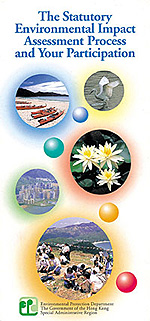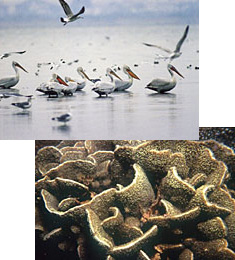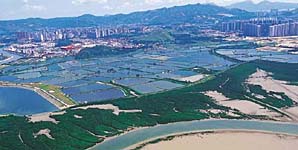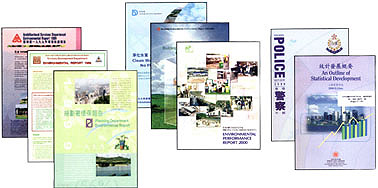This section aims to provide detailed information on environmental assessment (EA) and planning in Hong Kong. An overview is given below for the quick reference of the audience. Detailed information is organized into various categories, namely, EIA Ordinance, EIA Information, About EA & Planning, Strategic Environmental Assessment, Tools for Corporate Environmental Management and Guidelines & References which can be accessed through the menu.
AN OVERVIEW ON ENVIRONMENTAL ASSESSMENT AND PLANNING
Background
Hong Kong faces environmental challenges that are similar to many other industrialised countries. Air pollution, sewage, noise, waste and a growing population all put pressures on our environment. The government has acted to contain pollution and make improvements, as detailed in the separate sections on AIR, NOISE, WATER and WASTE. It has also taken significant steps to prevent future problems. Hong Kong has one of the most transparent environmental impact assessment (EIA) systems in the world. Environmental assessment is applied not only to individual projects, but also to strategic policy and proposals, making it a valuable tool in the move towards a more sustainable path of development.
The EIA Process
Environmental impact assessments are intended to identify the potential impacts of a project in the early planning stages, as well as any alternatives or mitigation measures. The EIA process started being applied in a limited form in the 1980s in Hong Kong, when the government started assessing its own projects. The process expanded through the 1990s, resulting in the EIA Ordinance which makes EIAs statutory for designated projects in both the private and public sectors. One of the hallmarks of the Ordinance is that it allows for a good deal of public input to the EIA process.
More than 500 EIAs have been produced since the late 1980s. They have resulted in such things as noise barriers along new roads, better new town design, more attractive developments, protection of ecologically-important areas and the minimisation of impacts from the new airport at Chek Lap Kok.

Strategic Planning
Strategic planning is another area where environmental impacts are assessed. The EPD oversees Strategic Environmental Assessments (SEA) with the aim of promoting the full consideration and integration of environmental implications at the early planning stage of major strategic policies. This will help to avoid environmental problems and to identify environmentally-friendly options, rather than mitigating environmental impacts at a later stage which are often not effective nor cost-effective. The first major government plan to undergo a comprehensive SEA was the 1996 Territorial Development Strategy Review, in which options for future needs and growth areas were identified. That SEA resulted in the government's decision to explore sustainable development for Hong Kong. For details, please refer to the three SEA reports, namely Territorial Development Strategy Review, the Third Comprehensive Transport Review, and the Second Railway Development Study.

Mainland Partnership
Pollution does not respect boundaries and the pollutants from Hong Kong and Guangdong often mix, exacerbating the problem. Hong Kong and Guangdong officials have been working together to tackle cross-boundary environmental issues since 1990. These have resulted in the first joint EIA, which concerned the Shenzhen River regulation project and was completed in 1995; half-yearly regular audits on the implementation of action plans for the protection of Mirs Bay and Deep Bay areas; and a joint study on the air quality in the Pearl River Delta Region.

Green Government
As part of the effort to protect Hong Kong's environment, the government tries to minimise its own impacts. In 1992, all papers submitted to the Executive Council were required to include "green" paragraphs indicating the likely environmental implications of the proposals. In 1994, all government departments and bureaux appointed green managers to oversee their environmental measures and monitor their green performance. Leading by example, nearly all government bureaux and departments have published their annual environmental performance report starting from 2000. For details, please refer to Environmental Performance Reporting.

The EPD is trying to encourage more private companies to publish environmental performance reports. For the latest trends about organisations and companies in Hong Kong produced reports on their environmental impacts, please refer to A Collection of Local & Overseas Environmental Performance Reports.
For more information on environmental assessment and planning in Hong Kong, please refer to About EA & Planning.
![]()